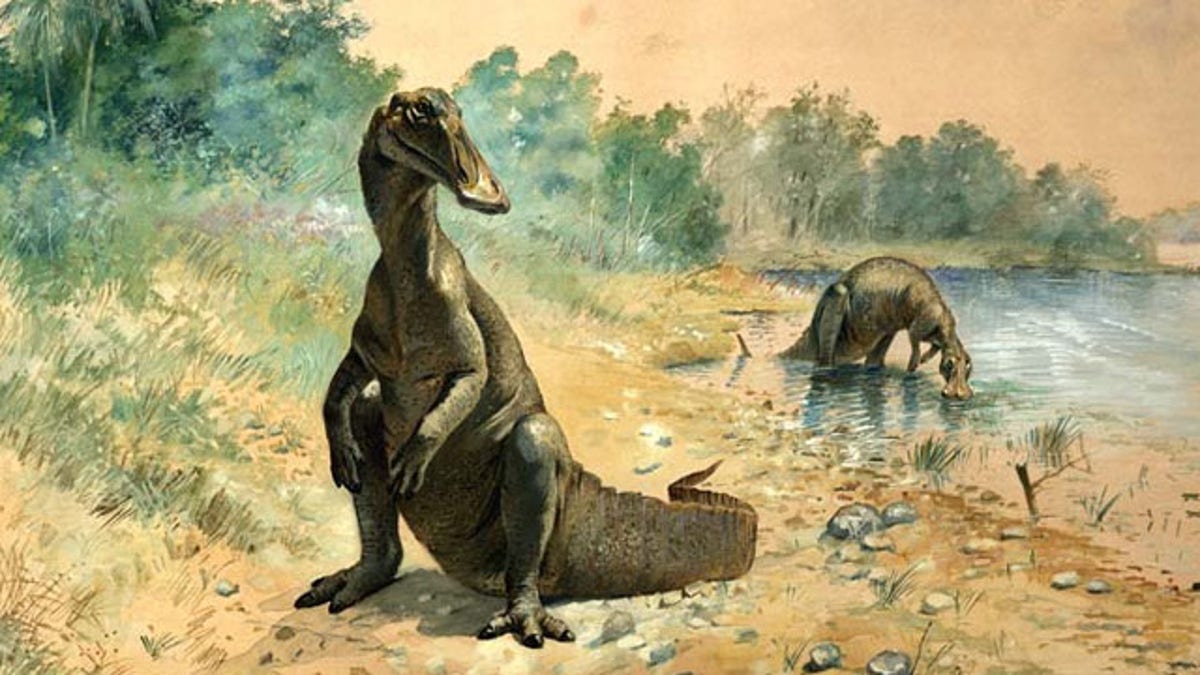
An early restoration of a duck-billed hadrosaur. (Charles R. Knight)
Scientists hope to shed light on dinosaur evolution with the naming of a new hadrosaur -- the oldest duck-billed dinosaur known from North America.
Called Acristavus gagslarsoni, this new dinosaur is unique because it lacked the distinctive head ornamentation common to its later relatives -- all other hadrosaur fossils have come with some kind of adornment on their skulls. (With one exception from the end of the Cretaceous Period, the time just before the mass extinction of the dinosaurs.)
As such, the discovery gives a clue into how hadrosaur headgear evolved over time. Scientists now believe that two different styles of ornamentation evolved independently from an ancestor that had none.
And these new dinos, it seems, also liked to travel.
"To find two specimens 650 miles apart that lived at virtually the same time, and were discovered within one year of one another is extremely rare in dinosaur paleontology," said Terry Gates, a research associate at Chicago's Field Museum, and a member of the team that documents the discovery in the July issue of the Journal of Vertebrate Paleontology.
The first fossil specimen was found in Montana in 1999 by the Old Trail Museum staff and volunteers, including a group of "junior paleontologists" from the University of Chicago and was excavated in 2001 and 2002 by study coauthor Rebecca Hanna for the Museum of the Rockies in Bozeman, Mont., where it now resides.
The Utah specimen was found in the year 2000 in Grand Staircase Escalante National Monument by study coauthor C. Riley Nelson, an entomologist from Brigham Young University, who reported his finding to a local paleontologist.
Hadrosaurs are known as the duck-billed dinosaurs due to the similarity of their head to that of modern ducks.




















